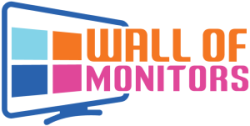Cybersecurity has become one of the most important elements of growth and success in the modern business world. Now that companies across the globe are digitizing their processes and migrating their operations into the cloud, they are effectively increasing productivity and efficiency while minimizing costs and financial waste. However, digital transformation brings about numerous security questions and challenges for modern businesses, and that goes far beyond implementing computer security measures in the office.
A growth-oriented company needs to take a comprehensive approach to security, data protection and privacy, as well as data recovery and business continuity in the cloud – in order to minimize risk and safeguard the brand’s reputation. This is important not only for in-house processes, but also any projects you’re working on, such as building an app that needs to have all the necessary security features in place.
Read more about thehomeinfo
In a nutshell, you need to create a cloud security framework, which will outline the policies, tools, configurations, and rules you need to ensure safety and security on your cloud platform. Here’s how to build one yourself.
Identify risk factors for your entire organization
The first step in creating a security framework for the cloud is to identify all the possible risk factors in your organization. Your focus should be on the risks pertaining to systems, assets, data, and capabilities, all of which you need to keep safe from data leaks and incursions by bots and hackers. A clear example of the importance of having a security framework is the healthcare industry, where institutions need to meet HIPAA (The Health Insurance Portability and Accountability Act) standards for patient security.
If you’re developing a HIPAA mobile application for your medical practice or clients in the healthcare industry, your top priority should be to ensure compliance through your application but also make sure that the app itself is completely secure. To do this, you need to assess all the security risks that may put your brand, the app, and the users in danger.
Implement the right security measures
The second step in creating a robust security framework is to develop and implement the necessary security features and systems for every service in your IT infrastructure. This means that every piece of hardware and software in your IT infrastructure needs to have the appropriate safeguards that protect the user, the company, and your customer’s data from data leaks and cyber-attacks.
Read more about thehomeinfo
Nowadays when employees are bringing their own devices to work, it becomes especially important to set up MDM software for iPhone and other devices to elevate security.
For supply chain management, for example, deploying the right security features is of the utmost importance. In order to secure your software supply chain and minimize cybersecurity threats to your operation, you can implement multi factor authentication, early warning systems, and prevent any open-source executables from installing unwanted software.
Leverage monitoring solutions and warning systems
In order to stop a cyber-attack before it strikes, you need to have early warning systems and a set of key activities in place that will identify a potential threat quickly and efficiently. Using robust tools like AppDimenstions, enterprises can now improve security standards, ensure better visibility and compliance, as well as visualize key data points to identify security risks.
Only by using the right tools and by visualizing the information stored in your cloud platform can you spot certain patterns and identify potential cracks in your firewalls and any other security systems. This will also allow you to develop an alert system for when you identify a potential threat that will notify the key security personnel and trigger security protocols.
Use the right tools to combat a threat
The way you respond to a threat can mean the difference between maintaining business continuity and putting your employees and customers at risk of getting their sensitive data stolen or leaked. Every threat needs to have its appropriate response in order to ensure the best possible outcome for your company, which is to stop an attack and keep the data intact.
Firstly, you need to have a defense plan in place that you can enact immediately upon identifying a threat or an ongoing attack. Your personnel should be properly trained to lock their computers and systems and secure their accounts in the cloud immediately after the first security notification is sent.
It’s important for everyone to know exactly what their role is in case of a security threat, and what they can do to prevent data leaks and theft. Keep in mind that while your automated security systems have an important role to play here, the actions of your employees will have a major impact as well, so it’s important to train and educate them properly.
Have a procedure in place to restore cloud security
The final piece of your cloud security framework is to develop and implement a procedure for data recovery and getting your business back online as quickly as possible in the case of a system shutdown. Data recovery is not only important for your business as a whole, but also any software you’re developing and if you’re testing an app for security vulnerabilities.
Modern cloud providers can offer you robust data recovery systems but also lock-out features that can activate automatically as soon as an incursion is detected, in order to prevent data leaks in the first place.
You can find out the best place where you can know about the hiboox.
Over to you
Having a cloud security framework is essential for any software development company, but also any growth-oriented business that operates in the cloud. With these five pillars in mind, go ahead and create your own framework that will ensure your business, products, people, and customers are safe in the digital realm.

